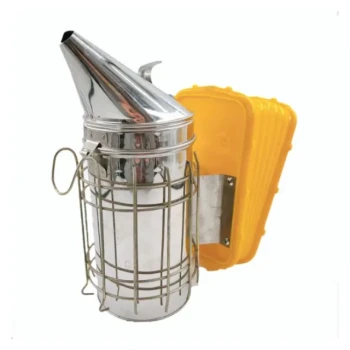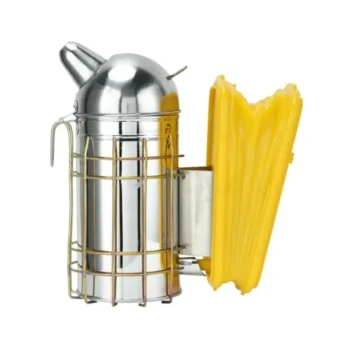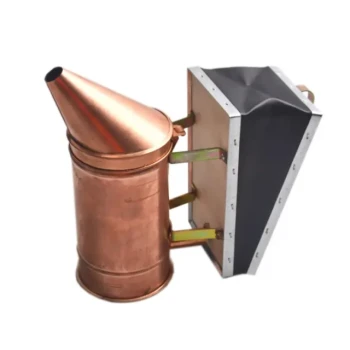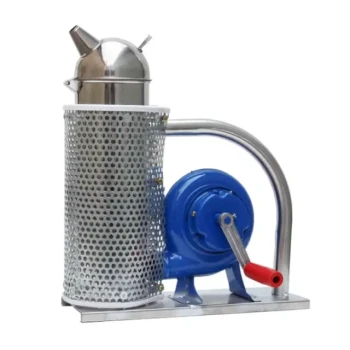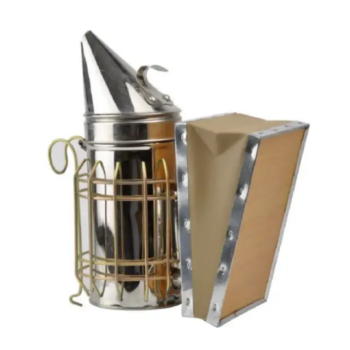No, when used correctly, a bee smoker does not harm bees. The cool, white smoke is a tool designed to manipulate bee behavior for safe hive inspections, not to inflict injury. Its primary function is to mask the chemical signals bees use to communicate alarm, effectively preventing a coordinated defensive response from the colony.
A bee smoker is an essential beekeeping tool that leverages the bees' natural instincts to create a calmer, safer environment for both the beekeeper and the colony. The key to its safe use lies in understanding how it works and applying it with moderation.
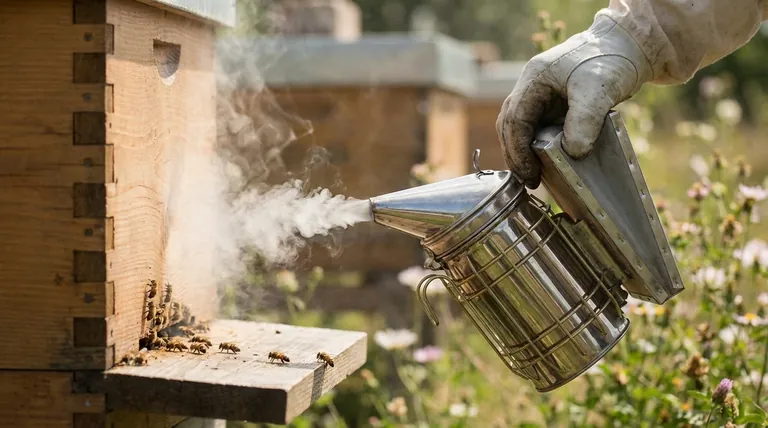
How a Bee Smoker Calms a Hive
A smoker works by disrupting two of the bees' primary natural responses: chemical communication and survival instincts. It is not about sedation or incapacitation.
Masking the Alarm System
When a guard bee perceives a threat, it releases an alarm pheromone. This chemical signal acts as a call to arms, alerting other bees in the colony to the danger and triggering defensive behavior, like stinging.
The thick smoke from a smoker effectively masks these pheromones. The other bees never receive the alarm signal, so a colony-wide defensive response is never initiated. This keeps the hive's overall temperament calm and manageable.
Triggering a Survival Instinct
Smoke also triggers a deeper, evolutionary instinct in honeybees. The presence of smoke signals a potential forest fire, threatening their home.
In response, bees will immediately begin to gorge on honey. Their instinct is to load up on resources in case they need to abandon the hive and find a new home. A bee with a full abdomen of honey is physically less able to flex its body to sting and is generally more docile.
Understanding the Trade-offs and Risks
While the smoke itself is not inherently harmful, improper use of a smoker can cause stress and potential harm to the colony. True expertise lies in knowing the risks and how to mitigate them.
The Danger of Over-Smoking
Using too much smoke is the most common mistake. A few gentle puffs at the entrance and under the lid are usually sufficient.
Excessive smoke can be overly stressful for the colony and may drive bees to abscond (abandon the hive) entirely. It can also irritate their respiratory systems if used in extreme amounts.
Choosing the Right Fuel is Crucial
The material you burn in your smoker matters significantly. Never use synthetic materials, treated wood, or anything containing chemicals, glues, or toxins.
These materials can release harmful compounds into the smoke, which can poison your bees and contaminate your honey. Stick to clean, natural fuels like untreated burlap, pine needles, cotton, or aged wood shavings.
The Risk of Overheating
The smoker itself gets very hot. The goal is to produce cool, white smoke, not hot air or embers.
Puffing a hot smoker directly onto the bees can burn their wings and bodies. Always test the smoke temperature on the back of your hand before directing it toward the hive. If it's uncomfortably hot for you, it's too hot for the bees.
Best Practices for Safe and Effective Use
Your goal is to use the smoker as a precise tool for communication, not as a blunt instrument. Applying it correctly ensures the well-being of your bees while you work.
- If your primary focus is minimal disruption: Use as little smoke as possible. A few puffs at the entrance 1-2 minutes before opening the hive, and one or two puffs across the top of the frames, is often all that is needed.
- If your primary focus is colony health: Always use clean, dry, and natural fuel sources. Avoid anything that produces acrid or chemical-smelling smoke.
- If your primary focus is safety for both you and the bees: Regularly check that you are producing cool, white smoke. If you see embers or feel significant heat, let the smoker cool down before proceeding.
Using a bee smoker is a sign of a respectful beekeeper who understands how to work in harmony with the colony's natural instincts.
Summary Table:
| Key Aspect | Impact on Bees |
|---|---|
| Correct Use | No harm; calms the colony by masking alarm pheromones. |
| Over-Smoking | Can cause stress, respiratory irritation, or lead to absconding. |
| Poor Fuel Choice | Toxic smoke from synthetic materials can poison bees and contaminate honey. |
| Smoker Temperature | Hot smoke or embers can burn bee wings and bodies. |
Ensure the health of your apiary with professional-grade equipment from HONESTBEE.
As a trusted wholesale supplier to commercial apiaries and beekeeping equipment distributors, we provide the reliable, high-quality smokers and fuels you need to work safely and effectively. Our products are designed for beekeepers who prioritize both colony welfare and operational efficiency.
Ready to equip your operation with tools that respect the hive? Contact our expert team today to discuss your wholesale needs and discover the HONESTBEE difference.
Visual Guide

Related Products
- European Stainless Steel Bee Smoker for Honey Bee Hive
- Professional Bee Smoker with Elongated Spout and Durable Bellows for Beekeeping
- Heavy-Duty Bee Smoker with Durable Plastic Bellows for Beekeeping
- Premium Traditional Copper Bee Smoker with Bellows
- Heavy Duty Manual Bee Smoker Blower for Beekeeping
People Also Ask
- What are the advantages of a high-quality bee smoker? Achieve Calm, Confident Hive Management
- Can you use too much smoke on bees? The Right Way to Use a Bee Smoker for Calm Inspections
- What are the key benefits of using a bee smoker? Master Hive Inspections Safely and Efficiently
- What are the benefits of smoking bees? Achieve Safer, Calmer Hive Inspections
- How does a smoker help during hive inspections? The Key to Calm, Safe Beekeeping

